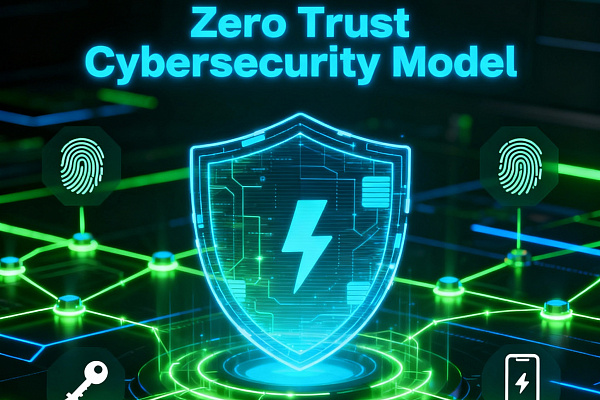A DDoS attack is an attempt to overload a server or network with requests from multiple sources, making it inaccessible to normal users. Such attacks have become very popular, making DDoS protection one of the most important tasks. Unfortunately, it is not always possible to be completely safe from DDoS in advance. Let’s find out what to do to protect a server during an attack.
Detecting a DDoS attack
The nature of this malicious activity is that it mimics real requests to the server. This means that it is important not only to detect suspicious activity, but also to distinguish the actions of ordinary people from a DDoS attack.
To determine if the server is really under attack, analyze traffic statistics. Some of the signs of a DDoS attack include:
-
Large spike in incoming requests;
-
An increase in the number of requests from the same IP addresses;
-
Server errors such as "503 Service Unavailable" or "504 Gateway Timeout";
-
Server or network slowdown;
-
Failure to connect to the server.
Various traffic monitoring tools such as tcpdump, Wireshark and ntopng can be used to detect a DDoS attack. These tools allow system administrators to analyse traffic in real time to identify suspicious activity.
Activating protection systems
If you see signs of a DDoS attack, activate your protection system immediately. There are several ways to prevent DDoS attacks, including:
Network level traffic filtering. This method involves blocking incoming packets from specific IP addresses or ports. To filter traffic, you can use a range of specialized equipment such as firewalls or routers with traffic filtering capabilities. Alternatively, you can use traffic filtering software such as iptables or ipfw.
Use cloud-based anti-DDoS services block attacks by rerouting traffic through their servers, where it is filtered and cleansed of malicious requests. Popular cloud-based DDoS protection services include solutions from Cloud4Y.
Use intrusion detection and prevention systems (IDS/IPS). These systems analyze traffic, detect suspicious activity, and block it.
Depending on the situation and the characteristics of the server, the choice of protection method will vary. Sometimes it is necessary to use multiple protection methods simultaneously.
Another option for temporary filtering is to enable the geo-blocking option. This is effective when an attack is observed from one or more regions. If the attack is widespread, geo-filtering is less effective. Also, a proven way to deal with DDoS is to use multiple filtering centers with different approaches to traffic analysis.
Constant monitoring
While the attack is in progress and the protection systems are working, you need to monitor the situation and analyse the traffic statistics. This will allow you to determine whether the attack has been effectively prevented and to change the protection strategy if necessary. Traffic monitoring tools include tcpdump, Wireshark and ntopng.
You should also monitor the server and the applications installed on it to identify any problems that might be caused by a DDoS attack. Server monitoring tools include top, htop, vmstat and netstat.
Analyzing the attack
Once an attack has been successfully stopped, it is important to review it to identify its source and motivations. This will help strengthen defenses against future attacks and prevent reinfiltration.
Reinforce security
After an attack has been analyzed, it is important to strengthen the server's security to prevent further attempts. The measures include:
-
Installing the latest security updates and patches for the operating system and applications;
-
Setting up a firewall to block unwanted requests;
-
Using authorization and authentication systems to access the server;
-
Using security protocols such as HTTPS and SSL/TLS;
-
Performing regular security audits and traffic monitoring.
You can also install specialised DDoS protection tools such as Fail2Ban, DDoS Guard and ModSecurity. With these tools, you can configure IP blocking rules and protect the server against different types of attack.
Once server defences have been strengthened, have an action plan in place to mitigate a repeat DDoS attack. This plan should include steps for activating the protection system, monitoring the situation and liaising with your ISP.
In addition, the DDoS protection system should be tested regularly to verify its effectiveness and to identify vulnerabilities. You can use custom tools such as LOIC and HOIC for testing.
Cloud-based DDoS protection

Cloud providers offer a number of services that can help protect your server from DDoS attacks. Here are some of them:
Content Delivery Network (CDN)
A CDN is a network of servers in different geographical locations that caches your site's content and delivers it to users from the closest server. This reduces the load on your server and improves your site's response time. In addition, a CDN can help protect your server from DDoS attacks by distributing traffic between multiple servers and filtering out malicious requests.
Anti-DDoS services
Some cloud providers offer DDoS protection services that use advanced technologies to detect and block malicious traffic. These services may include traffic filtering, behavioural analysis and real-time network monitoring. Cloud4Y's anti-DDoS system has been proven on numerous occasions to help companies and government agencies weather cyber-attacks on their resources.
Automatic scaling
Cloud providers offer the service of automatically scaling server resources based on load. This is usually helpful during peaks in customer demand, but it can also be an effective solution against attackers. This means that in the event of a DDoS attack, your server will automatically increase its capacity to handle the increased traffic. This prevents the server from overloading and ensures that your site continues to function without interruption.
Secure network connections
Virtual private networks (VPNs) or direct connections to the cloud prevent traffic interception and protect data from unauthorized access.
Monitoring and alerts
These tools help monitor server activity and alert you to suspicious events so you can respond quickly to security threats and prevent potential attacks.
By using these services, server owners can significantly improve protection against DDoS attacks and minimize the risk of security breaches.



